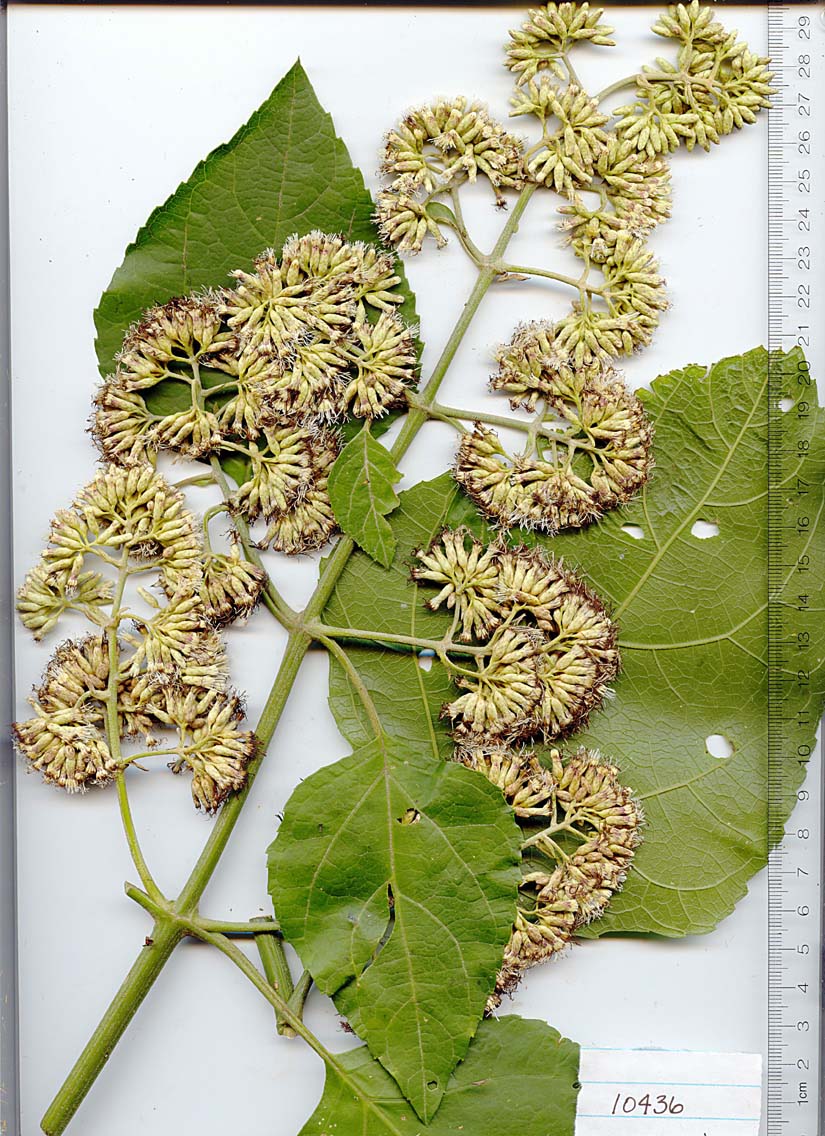Asteraceae
|
Asteraceae |
|
|
Theodore M. Barkley+, Luc Brouillet, John L. Strother in Flora of North America (vol. 19, 20 and 21) Annuals, biennials, perennials, subshrubs, shrubs, vines, or trees. Roots usually taproots, sometimes fibrous. Stems usually erect, sometimes prostrate to ascending (underground stems sometimes woody caudices or rhizomes, sometimes fleshy). Leaves usually alternate or opposite, sometimes in basal rosettes, rarely in whorls; rarely stipulate, usually petiolate, sometimes sessile, sometimes with bases decurrent onto stems; blades usually simple (margins sometimes 1-2+ times pinnatifid or palmatifid), rarely compound. Inflorescences indeterminate heads (also called capitula); each head usually comprising a surrounding involucre of phyllaries (involucral bracts), a receptacle, and (1-)5-300+ florets; individual heads sessile or each borne on a peduncle; heads borne singly or in usually determinate, rarely indeterminate, arrays (cymiform, corymbiform, racemiform, spiciform, etc.); involucres sometimes subtended by calyculi (sing. calyculus); phyllaries borne in 1-5(-15+) series proximal to (i.e., outside of or abaxial to) the florets; receptacles usually flat to convex, sometimes conic or columnar, either paleate (bearing paleae or receptacular bracts that individually subtend some or all of the florets) or epaleate (lacking paleae); epaleate receptacles sometimes bristly or hairy or bearing subulate enations among the florets. Florets bisexual, pistillate, functionally staminate, or neuter (also called neutral); sepals highly modifed (instead of ordinary sepals, each ovary usually bears a pappus of bristles, awns, and/or scales, sometimes in combination within a single pappus); petals connate, corollas (3-)5-merous, ± actinomorphic or zygomorphic (one or both kinds in a single head, see descriptions of radiate, discoid, liguliflorous, disciform, and radiant following); stamens (4-)5, alternate with corolla lobes, filaments inserted on corollas, usually distinct, anthers introrse, usually connate and forming tubes around styles (rarely filaments connate and anthers distinct; e.g., Heliantheae, Ambrosiinae); ovaries inferior, 2-carpellate, and 1-locular with 1 basally attached, anatropous ovule; styles 1 in each bisexual, functionally staminate, or pistillate floret; each style usually ringed at base by a nectary, distally 2-branched with stigmatic papillae borne on adaxial face of each branch in 2 separate or contiguous lines or in 1 continuous band ( The largest angiosperm family with over 22,000 described species globally, it is also one of the most distinctive in terms of its floral morphology. In North America there are 418 genera and about 2,400 species. Variable growth form, resin canals and/or lactifers often present. Leaves simple or compound, spiral or opposite, exstipulate. Inflorescence one or more heads arranged into various types of secondary inflorescences, each head subtended by phyllaries (bracts), heads of five general types: discoid, disciform, radiate, ligulate, and bilabiate. Flowers perfect, imperfect or sterile, radial or bilateral, of three types: bilabiate, disk, or ray/ligulate. Sepals highly modified, forming pappus composed of 2-many scales or bristles that are variously shaped, often hairy, barbed or plumose. Corolla of 5 connate petals, variously shaped. Stamens 5, usually with connate anthers, plunger pollen presentation, 2 connate carpels, and inferior ovaries with basal placentation. Fruit an achene (cypselae), usually arranged in a multiple fruit. |
|
